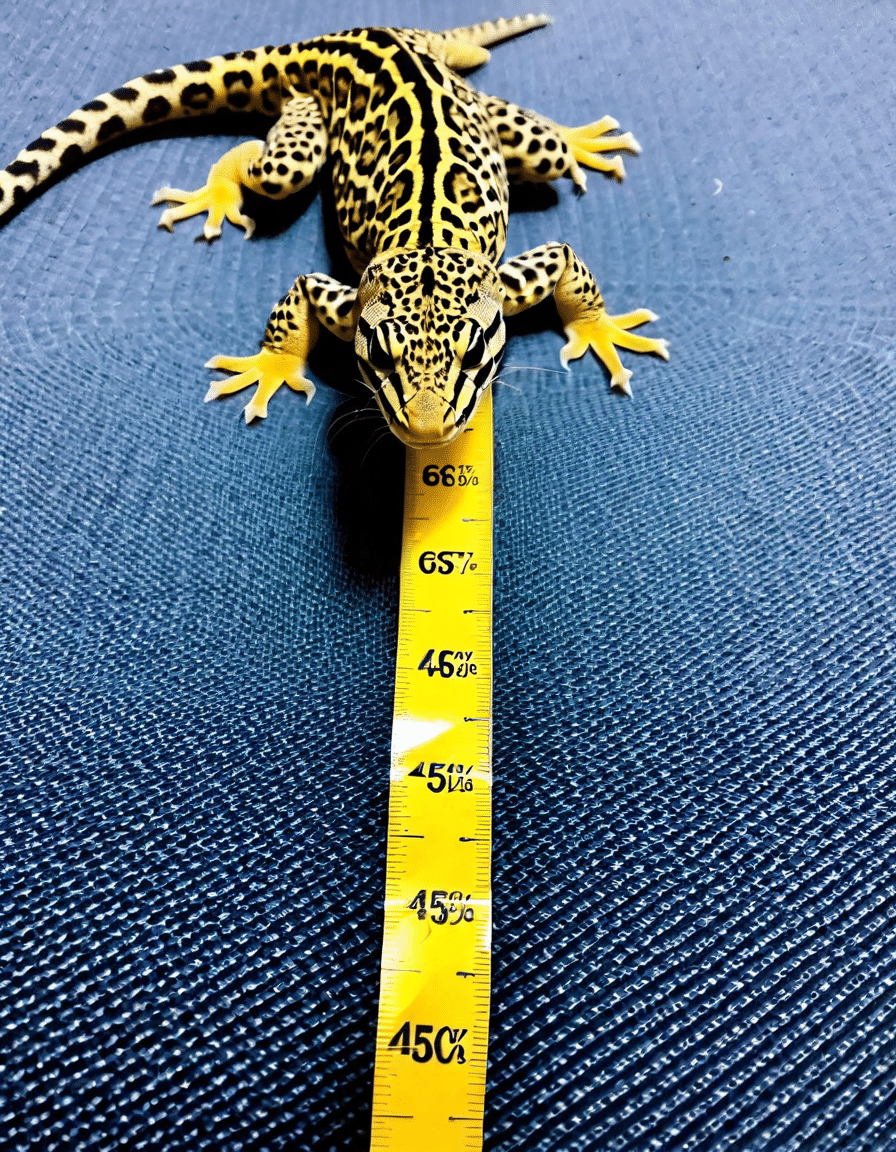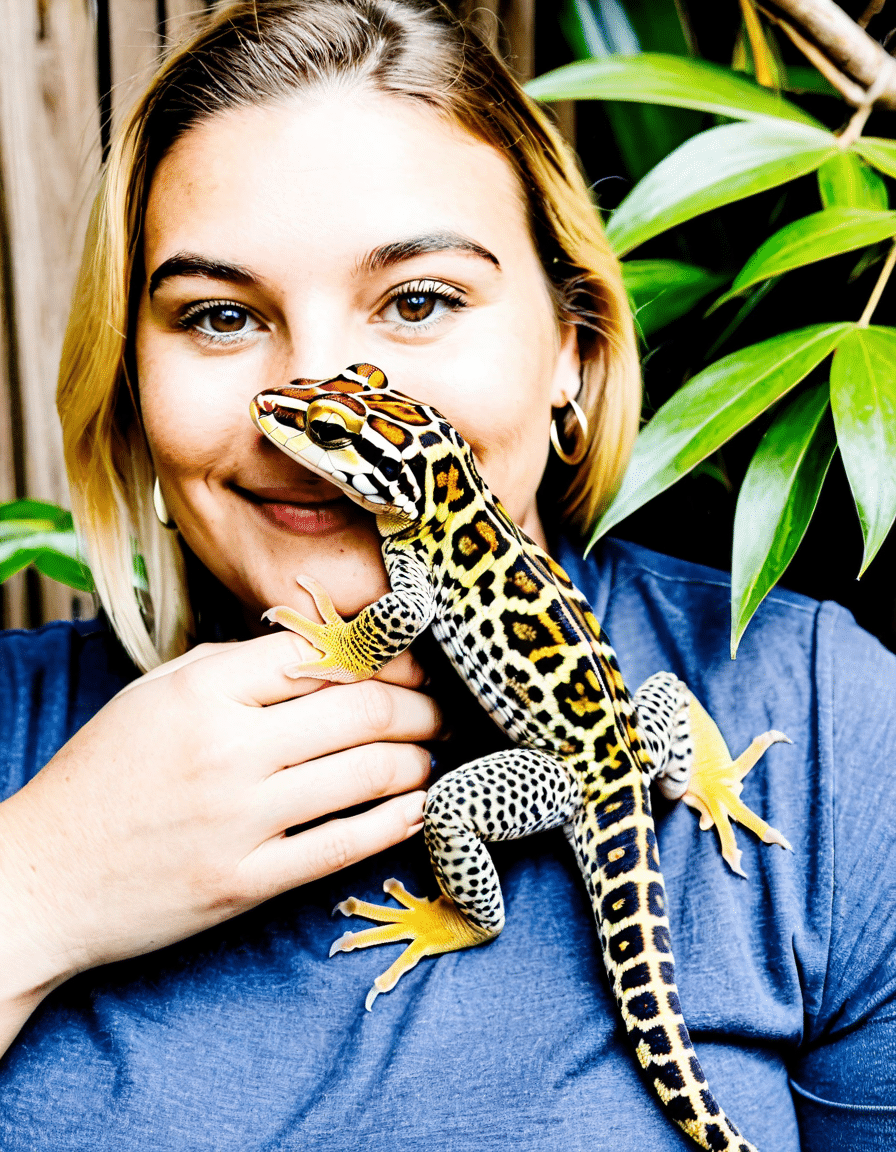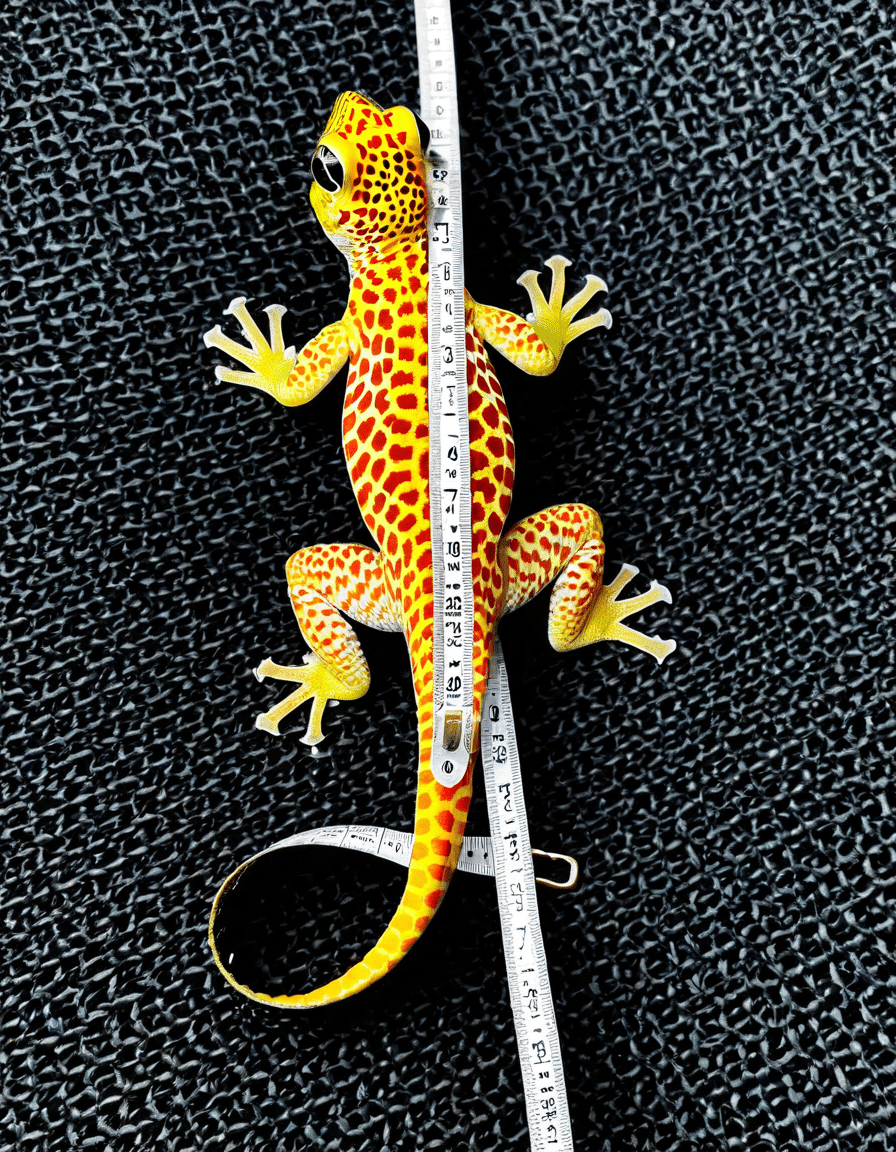Leopard geckos (Eublepharis macularius) have taken the reptile world by storm, and it’s no wonder why! Their engaging personalities and manageable care requirements make them favorites among pet lovers. But if you’re considering welcoming one of these little gems into your life, you might be asking yourself, “How big can leopard geckos get?” On average, adult leopard geckos range from 7 to 10 inches in length, while exceptional individuals can reach lengths of 12 inches or more. Factors such as genetics, diet, and living conditions can significantly influence their size. Let’s dive deeper into this fascinating subject and explore what you can expect from your leopard gecko.
Understanding How Big Can Leopard Geckos Get
When you’re contemplating adding a leopard gecko to your family, size is one of the first things to think about. Typically, adult female leopard geckos measure around 18 to 20 cm (7.1 to 7.9 inches), while males are slightly larger, reaching lengths of 20 to 28 cm (7.9 to 11.0 inches). Interestingly, hatchlings often start small, averaging 2.8 to 3.9 inches long and weighing only 2 to 5 grams. They grow rapidly during their first year, reaching maturity around 12 months. At this point, males weigh about 60 to 80 grams, while females typically fall between 50 to 70 grams.
Leopard geckos come in various morphs, each possessing unique traits, including size. Breeders often focus on developing larger morphs, resulting in offspring that can exceed the typical size range. For example, the Tremper Super Giant is a popular morph, with some individuals reaching impressive weights above 110 grams within their first year. One such remarkable gecko named Moose even reached 140 grams at one year old and now sits at an astonishing 156 grams! That’s some serious growth!
Understanding the factors that impact how big leopard geckos can get is crucial. Quality care, including proper diet and environment, can lead to healthy growth. Interested in giving your gecko a home? Remember, they usually achieve their full size within a year to 18 months, making early decisions about their habitat important.

Top 5 Factors That Influence How Big Leopard Geckos Get
How Often Do Leopard Geckos Shed?
Leopard geckos typically shed their skin every four to six weeks, which varies based on their age and growth stage. Younger geckos tend to shed more frequently due to their rapid growth. However, several factors can affect the shedding process, such as humidity and temperature levels within their habitat.
It’s essential to maintain adequate humidity in your gecko’s enclosure. Keeping a damp hide filled with moss or soil is a great way to help your gecko during shedding. This not only promotes healthy shedding but encourages the production of good skin, too. Dehydration can lead to shedding issues, so make sure your gecko has access to clean water and is adequately hydrated.
In case you notice leftover shed skin stuck to your gecko, particularly around the toes or eyes, take action! This can indicate dehydration or insufficient humidity in the habitat. By closely monitoring and adjusting the environment, you can provide your gecko with the perfect conditions for healthy shedding.

What Can Leopard Geckos Eat for Optimal Growth?
A varied diet is fundamental for the health and growth of leopard geckos. Here are the key components you should include in their diet:
Maintaining a diverse menu helps your gecko grow optimally while also keeping mealtime exciting. Changing their diet slightly every now and then can prevent boredom and promote a healthy appetite.
Are Crested Geckos Comparable to Leopard Geckos? How Long Do Crested Geckos Live?
As you consider your reptile options, you may wonder how crested geckos (Correlophus ciliatus) stack up against leopard geckos. Crested geckos typically grow to lengths of 8 to 10 inches and can live longer, often reaching up to 15 years with proper care. On the other hand, leopard geckos usually have a shorter lifespan, living around 6 to 10 years.
While their care requirements share similarities—both species thrive in similar humidity and temperature ranges—their dietary preferences set them apart. Crested geckos enjoy a fruit-based diet, thriving on specially formulated foods from brands like Repashy and Pangea. While they can nibble on insects, they don’t need as much protein as their leopard gecko counterparts.
Understanding these differences is crucial for those considering multiple reptiles. By recognizing their unique dietary needs and preferences, you can create a harmonious living environment that caters to the specific requirements of all your beloved pets.
What Do Crested Geckos Eat?
Crested geckos thrive primarily on commercially available fruit-based diets and can also consume insects but only in smaller quantities compared to leopard geckos. Their diet is flexible but requires different nutritional considerations, so knowledge about their specifics is vital to maintaining their health.
Addressing a Common Question: Why Don’t Crested Geckos Regrow Their Tails?
One key difference between leopard geckos and crested geckos is their tail regeneration abilities. Leopard geckos can regrow their tails if they lose them, thanks to their evolutionary adaptations. In contrast, crested geckos lack this ability, making it essential for pet owners to handle them with care.
This lack of tail regeneration in crested geckos highlights the importance of maintaining a stress-free environment. Avoid situations that could lead to tail loss, ensuring proper handling and habitat conditions that promote peace. By doing so, you can guarantee that both species thrive in your care.
Final Thoughts on The Size and Care of Leopard Geckos
Leopard geckos are captivating creatures that bring joy and companionship to their owners. Understanding how big they can grow and what factors influence their size makes you a more prepared pet owner. When you focus on genetics, nutrition, and care, you enrich their lives and promote excellent growth.
As you explore the size and needs of leopard geckos, remember to consider how they compare to other reptiles like crested geckos. By focusing on the unique characteristics and requirements for care, you can create a loving home for these remarkable reptiles. With dedication and commitment, you’ll enjoy a fulfilling relationship with your leopard gecko for many years to come!
Curious about how leopard geckos interact with houseplants? You can check out tips about Christmas cactus and cats here. Want to learn about the lifespan of other pets? Discover how long do wiener dogs live here or see if eating weeds can make a horse stiff here. Also, don’t miss out on information about the Kansas City Royals roster here, or read up on whether Chewy’s quality of dog food has decreased here. And just for fun, you might find Brian Dutcher’s Insights fascinating or explore the question of did John Wick really die? here. Finally, check out the amazing transformation of Sarah Huckabee Sanders’ weight loss here.
How Big Can Leopard Geckos Get?
Leopard geckos are not just adorable little lizards; they can grow to be quite impressive in size! Typically, you can expect your leopard gecko to measure between 7 to 10 inches long when fully grown. However, some of the larger individuals can reach up to 12 inches, making them noticeable companions in any home. With their size, they offer an engaging pet experience without the demands of a larger reptile species. Such growth may surprise first-time owners who are just dipping their toes into the fascinating world of reptiles, so get ready!
Fun Facts That Might Surprise You
Did you know leopard geckos can live for up to 20 years in captivity? That’s nearly a lifetime commitment! Their long lifespan allows for a unique bond to form between you and your pet, making it essential to consider your lifestyle before adopting one. Also, these streaky little critters don’t have eyelids like we do; instead, they have a protective scale covering called a “spectacle.” This adaptation enables them to roam around freely in their habitats without worries. Plus, they come in various colors and patterns, showcasing the beauty of genetic diversity in reptiles. For those thinking about starting a new venture, perhaps researching options like an open Llc could align with your business framework.
The Joys of Caring for a Leopard Gecko
Understanding how big leopard geckos can get is just one part of the fun. These fascinating creatures are known for their unique personalities, often becoming more social and interactive as they grow. Feeding your gecko requires a bit of attention, as they thrive on a diet of live insects, like crickets and mealworms. Interestingly, different feeding practices can also impact their growth rates—ensuring they receive a balanced diet will help them reach their full size potential. On that note, if you’re up for sharing your journey of keeping pets, there are ways to create a passionate community like through a blog or article on platforms that discuss animal care tips.
Whether you see a leopard gecko as a timid little friend or a future giant in your terrarium, understanding how big leopard geckos can get keeps the excitement alive. And ultimately, whether they’re 7 inches or 12 inches long, these unique reptiles bring their own charm and delight into your life!



